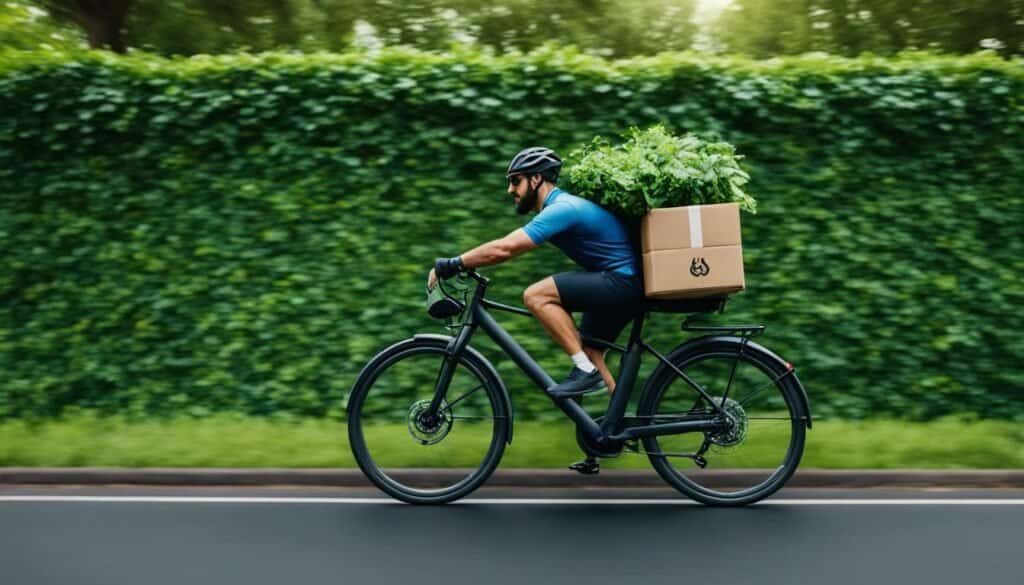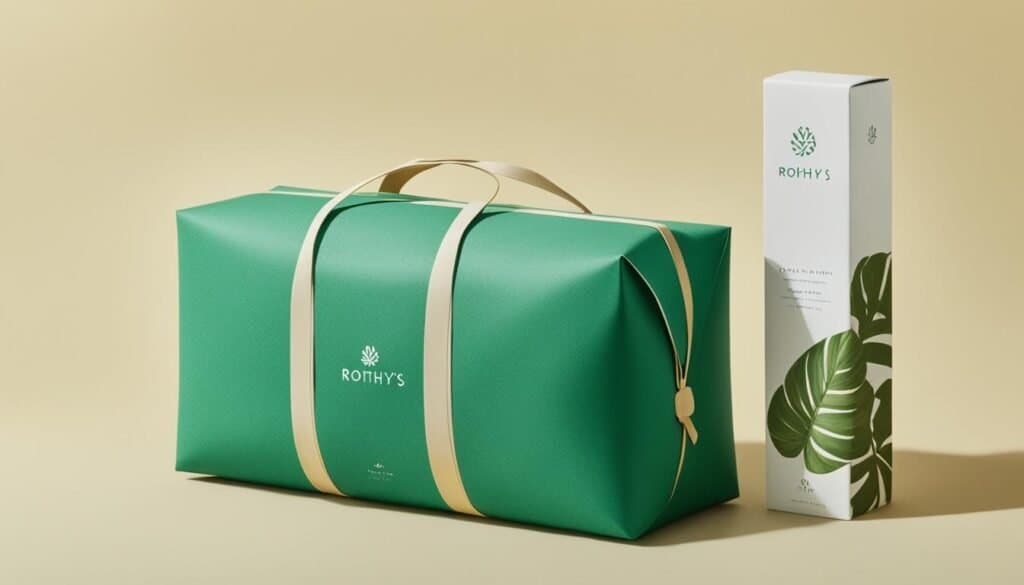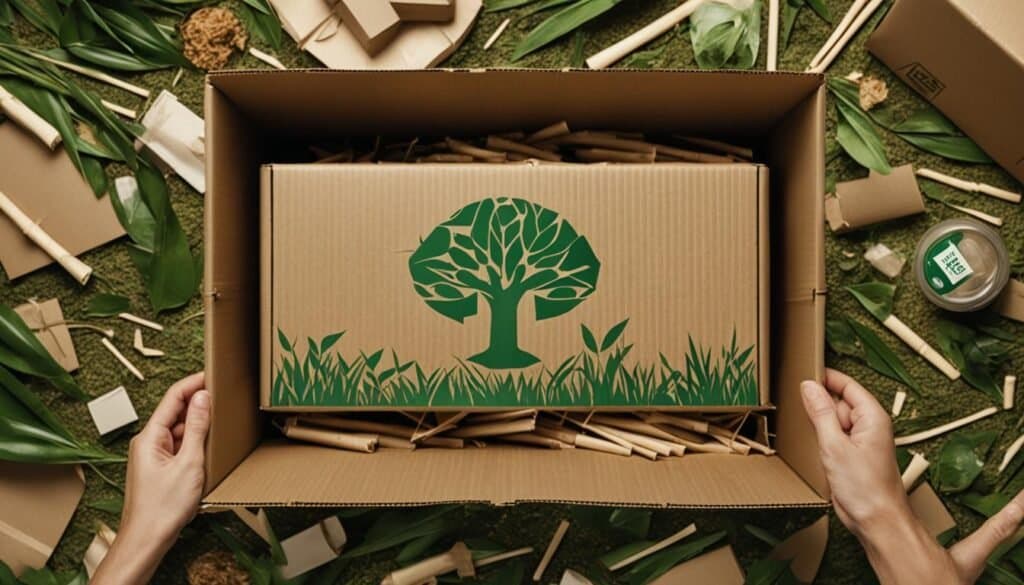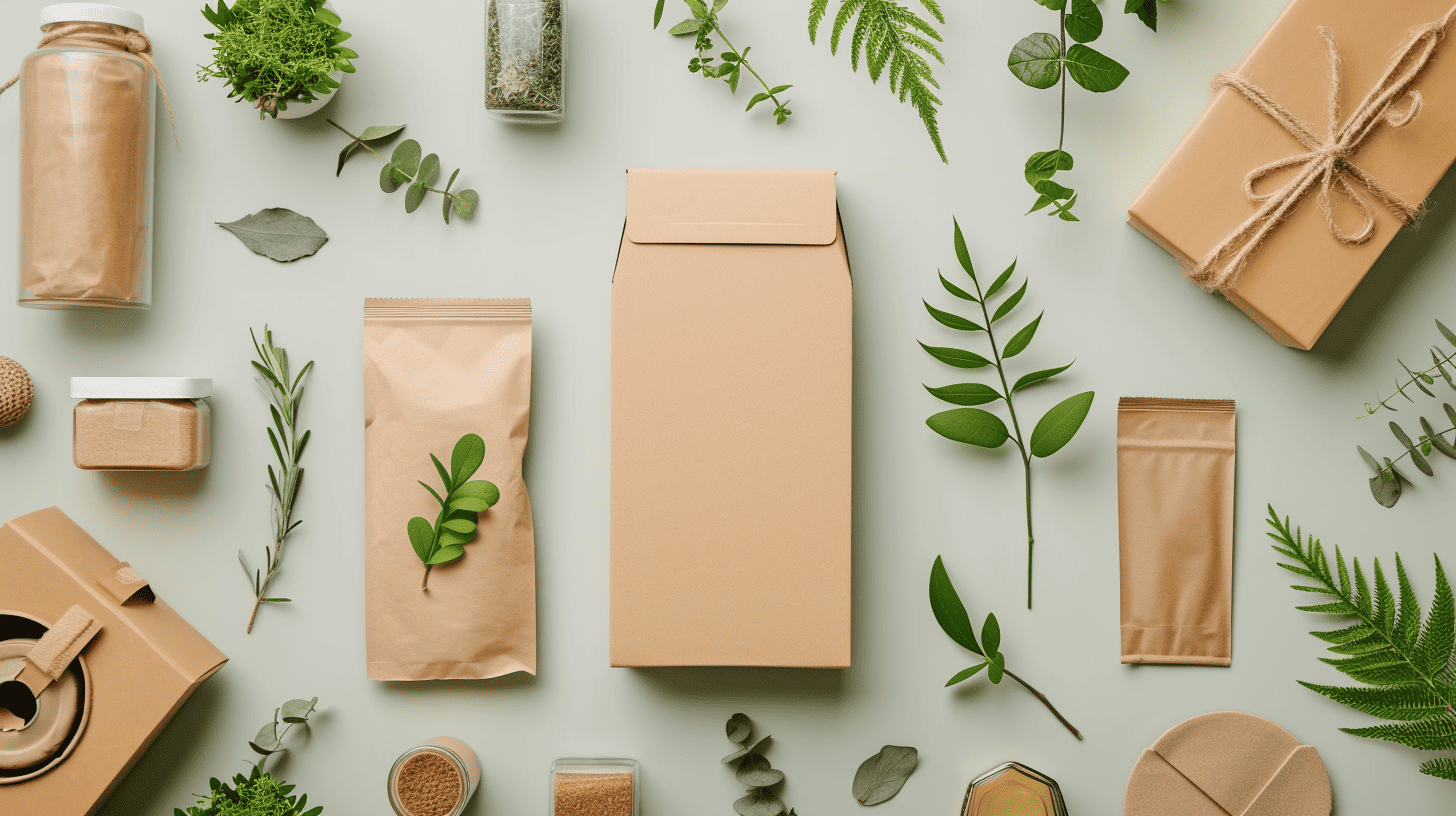As I delve into the world of sustainable product packaging solutions, it’s evident that consumer behavior is evolving. Shoppers are no longer just scanning for eco-friendly products; they are scrutinizing the eco-friendly practices of businesses thoroughly, particularly the packaging and shipping aspects. The founders behind innovative brands like TAMGA Designs and Zero Waste Cartel aren’t just creating products with sustainability at their core; they’re actively embedding eco-friendly packaging into every step of their supply chain.
From biodegradable garment bags made of cassava to commitments to ship bulk items, they illustrate the potential that lies in offering carbon-neutral shipping by offsetting emissions and using repurposed materials. As business owners like Eric and Yana Dales of TAMGA Designs explain, investing in environmentally friendly packaging solutions, like compostable mailers, isn’t just about protecting the planet – it reflects positively on profitability, resonating with customers who appreciate these efforts.
Key Takeaways
- Consumer behavior is shifting towards sustainability, driving demand for eco-friendly packaging materials and practices.
- Brands like TAMGA Designs and Zero Waste Cartel are successfully embedding sustainable packaging solutions into their supply chains.
- Bioplastics, recyclables, reusables, and renewables are among the sustainable materials being used for packaging.
- Carbon-neutral shipping by offsetting emissions is becoming a popular strategy for reducing environmental impact.
- Investing in environmentally friendly packaging solutions can improve profitability and customer loyalty.
21 Eco-Friendly Product Packaging Solutions
Here are 21 eco-friendly product packaging solutions and critical information:
- Reusable packaging
- 71% already engage in reusable and refillable activities
- Helps reduce waste and material use
- Recycled packaging
- Made from post-consumer recycled materials
- 37.6% plastic packaging waste recycling rate in the EU
- Degradable packaging
- Breaks down more quickly than conventional packaging
- Plant-based packaging
- Seen as very sustainable by 72% of consumers
- Glass packaging
- Highly recyclable material
- 6.2% market share forecast for 2029
- Metal packaging
- Highly recyclable material
- 6.2% market share forecast for 2029
- Paper packaging
- Biodegradable and renewable material
- 6.2% market share forecast for 2029
- Extended shelf life packaging
- Reduces food waste and spoilage
- Compostable packaging
- Breaks down into natural materials in commercial composting
- Bioplastics
- Plant-based alternative to conventional plastics
- Packaging downsizing
- Uses less material
- Alternative energy use
- Solar, wind, etc., for manufacturing
- Clear sustainability labeling
- 59% look for recycling info on labels
- Eco-friendly inks and coatings
- Uses plant-based and low-VOC materials
- Sustainable packaging materials sourcing
- Environmentally responsible material supply chains
- Reusable transport packaging
- Reduces waste from secondary packaging materials
- Minimal and innovative packaging design
- Optimizes material efficiency
- Smart and active packaging
- It can help extend shelf life and freshness
- Ocean plastics use
- Repurposes plastic waste in oceans
- Supply chain transparency
- Allows assessment of sustainability
- Carbon footprint labeling
- Communicates product footprint to consumers
The Growing Demand for Sustainable Packaging Practices
The pivot towards eco-friendly packaging solutions has garnered significant momentum as awareness around environmental sustainability grows among consumers and businesses alike.
Shopify: One effective eco-friendly packaging solution is to use sustainable materials that can be repurposed, thereby contributing to a circular economy and reducing waste.
Consumers are increasingly holding brands accountable for their packaging decisions, noting the profound impacts that traditional packaging materials have on the environment. They are demanding packaging solutions that reduce packaging waste, use renewable resources, and curtail the overarching environmental impact.
Consumer Awareness and Preferences Shift
In this transformative era, sustainable packaging refers to materials and practices that exert minimal strain on the environment. Enlightened by their customers’ preferences, businesses are actively seeking sustainable packaging options and sustainable shipping practices that align with their eco-conscious identities.
Brands like Zero Waste Cartel and Rothy’s illustrate how a conscious approach to eco-friendly practices and sustainable packaging design can resonate with environmentally savvy customers, boost brand loyalty, build a reputation for corporate responsibility, and, most importantly, contribute to a healthier planet.
Impacts of Packaging on Planet Earth
The environmental impact of packaging materials has increasingly come to the forefront of consumer decision-making. Plastics, long regarded as an easily disposable and cheap option, have been proven to be harmful to the planet as they do not biodegrade and often end up littering our oceans and landscapes. Turning instead to sustainable packaging materials, like biodegradable plastics and recycled paper, helps not only to curtail waste and environmental damage but also to influence consumer preferences that steer demand toward eco-friendly products.
Sustainable Business Strategies
As consumers continue to hold businesses accountable for their environmental footprint, adopting sustainable packaging solutions presents an opportunity for companies to demonstrate a commitment to responsible practices while also appealing to eco-conscious customers.
From choosing sustainable packaging materials to designing packaging with minimal waste, businesses looking to reduce their environmental impact can establish themselves as leaders in their industry while also catering to the growing consumer demand for eco-friendly products and sustainable business practices.
Eco-Friendly Product Packaging Solutions and Materials
In the quest to unearth and utilize eco-friendly packaging solutions, a diverse array of materials and methods positions itself at the forefront. These innovations share the common goal of reducing the environmental impact of packaging while still providing customers with functional, aesthetically pleasing products.
Use of Recycled Materials
Recycled materials such as post-consumer recycled plastics (PCR plastics) and paper are staples in sustainable packaging due to their ability to reroute materials from landfills back into the production cycle. Brands like Patagonia and Aveda are widely recognized for their commitment to using recycled materials in their packaging solutions, contributing to the collective charge towards more sustainable materials.
Biodegradable and Compostable Options
Biodegradable packaging, including starch-based packing peanuts favored by Lush Cosmetics and cassava-based mailers employed by TAMGA Designs, paves the way for materials that integrate effortlessly back into the earth. Additionally, compostable options such as plantable packaging from Botanical PaperWorks and packaging tape made from corn starch by BioPack exemplify a shift towards goods that offer an end-of-life solution that nurtures rather than harms our planet.
Innovative Plant-Based Packing Alternatives
Emergent technologies in plant-based alternatives, such as Ecologic’s shower-friendly paper bottles and Ecovative’s mushroom packaging, highlight the innovation happening within the sustainable packaging space. These solutions leverage natural, compostable resources over synthetic materials and showcase the potential of plant-based packaging like cloth wraps to transform the way we package goods and promote eco-friendly packaging options.
Reducing Carbon Footprint with Packaging Choices

One significant aspect of sustainable packaging we must consider is the carbon footprint associated with packaging choices. Brands like TAMGA Designs and Rothy’s have made a conscious effort to address their carbon footprint, focusing on methods to achieve carbon-neutral shipping and lowering their overall environmental impact.
- Offset Emissions: By calculating emissions based on the transportation of goods and purchasing offsets, companies can effectively minimize their adverse effects on the environment.
- Optimizing Packaging Design: Reducing the size of packaging by optimizing its design can also contribute to cutting down emissions. Holy Lamb Organics has displayed efficient use of materials, setting an example for other brands to follow.
When businesses embrace eco-friendly practices such as these, they convey a clear message to their customers: they are committed to environmental sustainability, zero-emission, and low carbon footprints. These efforts can lead to significant payoffs, including increased success and resonance with environmentally conscious consumers, proving that informed packaging choices are not only feasible but also highly beneficial to our planet.
“Reducing one’s carbon footprint through informed packaging choices is both feasible and beneficial for the planet.”
As more businesses join the ranks of those reducing their carbon footprints, we can collectively create a more sustainable world. Employing various eco-friendly practices such as carbon-neutral shipping, offset emissions, and optimizing packaging design can significantly contribute to the environmental sustainability of our planet.
Real-World Examples of Sustainable Packaging Successes

To anchor the idea of sustainable product packaging in reality, let’s reflect on real-world successes that illuminate the potential for substantial environmental impact reduction. One such example is Rothy’s, with its stylish, machine-washable footwear crafted from recycled water bottles. The brand’s commitment to a zero-waste production process and packaging made from post-consumer recycled materials is echoed by its enthusiastic customer base, including public figures like Meghan Markle.
Similarly, Meow Meow Tweet‘s vegan skincare range shows how recyclable packaging like glass and aluminum, paired with biodegradable kraft, can coalesce into a charming and eco-responsible brand image. Eco-friendly packaging extends beyond the realm of fashion and personal care; brands like EcoSpirits are revolutionizing the spirits distribution sector with their closed-loop technology that drastically cuts the use of single-use glass bottles.
Each of these examples carries a shared ethos: optimizing packaging elements, whether it’s material, design, or distribution, for the sake of global sustainability.
These real-world examples demonstrate the strides being made in sustainable packaging solutions and reflect the power of eco-friendly practices in building a sustainable business. By embracing eco-friendly packaging materials, companies like Rothy’s, Meow Meow Tweet, and EcoSpirits showcase the tangible impact and benefits of sustainability in action, paving the way for a greener future.
Compliance and Regulations in Sustainable Packaging
In today’s world, compliance with environmental regulations and global standards is crucial to maintaining and promoting sustainable packaging practices. Both global and regional guidelines drive the adoption of eco-friendly practices and influence the packaging landscape for businesses of all sizes.
Global Standards for Eco-Friendliness
The United Nations Sustainable Development Goals (UNSDG) serve as a comprehensive framework for encouraging responsible consumption and production, with a focus on sustainable packaging initiatives. Not only do businesses benefit from aligning with these global standards, but their commitment to eco-friendly practices is also enhanced.
Regional Laws Promoting Sustainability
Region-specific directives, such as those put in place by the European Union, are designed to increase recyclability and reduce single-use plastics. These regional laws create additional incentives and expectations for businesses to prioritize sustainable packaging initiatives.
Businesses can achieve compliance with these global and regional guidelines by:
- Staying informed about new regulations.
- Evaluating the sustainability of their products and packaging.
- Considering design principles that prioritize eco-friendly materials and practices.
- Engaging in transparent reporting of their efforts to adhere to environmental guidelines.
Developing partnerships with sustainably-minded suppliers and industry associations can further support businesses in maintaining compliance and staying updated on the evolving standards of environmental regulations.
Those who prioritize compliance in sustainable packaging are empowered to forge ahead in a world gravitating towards ecological balance, demonstrating their commitment to a healthier future for themselves and their consumers.
Challenges and Solutions in Sustainable Packaging

Navigating the transition to sustainable packaging presents both barriers and breakthroughs. For instance, Zero Waste Cartel initially struggled to find a warehouse partner that would accommodate its compostable mailers, illuminating challenges companies may face internally or with logistics partners. Resolving such challenges often involves finding the right partners and recalibrating packaging strategies to align with eco-friendly principles.
Overcoming obstacles in implementing eco-friendly options also includes size reduction, as seen with Holy Lamb Organics and their innovative approach to packaging large items in small packages. Solutions may involve creative strategies, such as returns programs for packaging or reconsidering current packaging needs in line with environmental objectives.
With determination and innovation, businesses can successfully operationalize sustainable packaging and decrease their ecological footprint.
Sustainable packaging challenges can be categorized into three main areas: logistics, packaging size, and the use of eco-friendly materials. Let’s take a closer look at the solutions embraced by companies to address these challenges:
| Challenges | Solutions |
|---|---|
| Logistics | Partnering with environmentally conscious logistics and warehouse providers to ensure the proper handling of sustainable materials and packaging. |
| Packaging Size | Adopting innovative design techniques to reduce packaging dimensions, optimize transportation, and ultimately decrease the carbon footprint. |
| Eco-Friendly Packaging Options | Transitioning to alternative materials like biodegradable plastics, plant-based materials, and recycled resources, while continuously researching and implementing new sustainable materials as they emerge. |
Each solution sets a precedent for the packaging industry, underlining that with determination and innovation, businesses can successfully operationalize sustainable packaging and decrease their ecological footprint.
How Packaging Engineers are Innovating for the Environment
Packaging engineers play a pivotal role in transforming the packaging industry by leveraging innovative design principles and effective transition strategies. Their work in sustainable design and commitment to the circular economy is helping businesses reduce their environmental footprint and contribute to global sustainability efforts.
Design Principles for Minimal Environmental Impact
Minimalism, source reduction, and right-sizing are key concepts that guide packaging engineers in designing eco-friendly solutions. These principles help create packaging that requires fewer resources, reduces waste, and conserves energy. By focusing on innovative materials like recyclable aluminum, glass, PCR plastics, ocean plastics, and bioplastics derived from renewable sources, packaging engineers bring forth alternatives that not only alleviate the environmental burden but also shatter traditional perceptions about packing materials.
Strategies for Transitioning to Sustainable Packaging
Transitioning to sustainable packaging can appear challenging for businesses, but packaging engineers offer a comprehensive array of strategies to help adopt eco-friendly practices. Here are some tactics that can ease the transformation:
- Gradual shift: Implementing sustainable packaging materials and methods progressively can minimize disruption to operations while allowing the integration of green practices.
- Brand alignment: Ensuring new packaging designs and materials align with the broader brand identity at every stage of the process.
- Inventory management: Adopting techniques like First-In-First-Out (FIFO) to help regulate stock levels, reduce waste, and facilitate the integration of environmentally-friendly packaging materials.
It is through the combined application of innovative design principles and strategic transitions that packaging engineers are shaping the landscape of the green packaging revolution.
Conclusion on Eco-Friendly Product Packaging Solutions
In conclusion, the journey towards eco-friendly product packaging solutions is built on a foundation of continuous innovation and active engagement with consumers. Companies like TAMGA Designs and Meow Meow Tweet demonstrate the power of creative efforts towards sustainable packaging, one rooted in the reduction of environmental impact. The key to maintaining this momentum is fostering ongoing collaboration and evolution of sustainable product packaging strategies.
The Importance of Continued Innovation
Businesses must continue to develop new materials and methods that drive positive environmental change. Examples such as TAMGA Designs’ biodegradable cassava-based mailers and Meow Meow Tweet’s return program for containers remind us of the endless potential for eco-friendly packaging. By prioritizing constant innovation, companies can ensure that the benefits of environmentally friendly packaging continue to grow, contributing to a healthier planet.
Engaging Consumers in the Eco-Friendly Packaging Journey
Engaging consumers is equally crucial in advancing the adoption of sustainable packaging. Brands like Zero Waste Cartel, which offer bulk shipping, have found success by catering to both customer value and ecological efficiency. By inviting customers to partake in the eco-friendly packaging journey and sharing responsibility, businesses can foster a shared commitment to a greener future. In doing so, they create a more sustainable world for all.
FAQ on Packaging Sustainability
Q: What are some sustainable packaging solutions?
A: Some sustainable packaging solutions include environmentally friendly packaging, compostable packaging, reusable packaging, and packaging made from eco-friendly materials.
Q: Why is sustainable packaging important?
A: Sustainable packaging is important because it helps reduce the environmental impact of packaging products, promotes eco-friendly materials, and supports the overall sustainability in the packaging industry.
Q: How can custom packaging be eco-friendly?
A: Custom packaging can be eco-friendly by using sustainable design practices, incorporating environmentally friendly materials, and offering sustainable packaging options to meet specific packaging needs.
Q: What are some alternatives to plastic packaging?
A: Some alternatives to plastic packaging include compostable packaging solutions, reusable packaging, and packaging made from natural resources like corn starch.
Q: How can eco-friendly packaging help your business?
A: Eco-friendly packaging can help your business by attracting environmentally conscious customers, reducing your business’s environmental impact, and showcasing your commitment to sustainability in packaging.
Q: What are some examples of sustainable product packaging?
A: Some examples of sustainable product packaging include biodegradable packing peanuts, packaging that may be made from natural resources like corn, and packaging with lower environmental impact compared to conventional packaging.
Q: How can packaging companies contribute to eco-friendly practices?
A: Packaging companies can contribute to eco-friendly practices by offering sustainable packaging options, promoting the use of eco-friendly materials, and implementing sustainable packaging and shipping solutions.
Q: What are the key considerations for environmentally friendly packaging?
A: The key considerations for environmentally friendly packaging include the use of eco-friendly materials, reducing the use of conventional packaging, and exploring packaging that offers a lower environmental impact.
Q: How does compostable packaging support sustainability in packaging?
A: Compostable packaging supports sustainability in packaging by providing an alternative to plastic packaging, utilizing resources like corn, and promoting the use of biodegradable packaging products.
Q: Why should businesses prioritize sustainable design in their packaging?
A: Businesses should prioritize sustainable design in their packaging to reduce environmental impact, align with eco-friendly packaging trends, and contribute to the shift towards more friendly packaging practices.





Leave a Reply